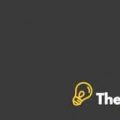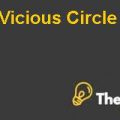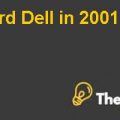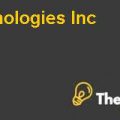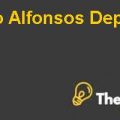
Situation Analysis
Product:
Full stocked bag according to teachers required school supplies inside. The bag comes embroidered with school logo; student name’s initials are available and in school colors on the bag. It saves students and parents’ time spent searching for the right materials, it also increases school brand awareness, and quality is guaranteed.
Price:
Offering prices that appeal to Uniform Stores as they are serving to price inelastic consumers. This will give a chance to First Class, Schools and Uniform stores retain attractive profit margins. This price will add up to student tuition, charged by the school, and then paid to Uniform stores and First Class.
Place:
Fully stocked bags with all required accessories required by teachers are sold exclusively through Uniform stores. Uniform stores are sent to customers for an additional charge. This strategy allows management of valuable resources.
Promotion:
High grade of personal selling with two complex stages. First, must target School’s Board of Directors, through customized, multilingual brochures that convey USP of the company that how it cares and raises school culture while distinguishing them from other schools. Need to have schools ‘push’ Uniform suppliers to carry the product. Management can adapt network from popular post-secondary school to easily network and get a contact with the board of directors. This will take the firm to a greater accessibility in adopting a contract. Break even analysis (Exhibit 1)
Competitors
The main existing rivals for the firm are Big-box and discount store not to forget the large brand like Wall-mart and BureauGros which are offering convenience to customers and competitive prices. They are also enjoying the benefit of large promotional campaigns as they are serving nationwide through various stores allocated in different locations. In school supplies Wall-mart offers a huge variety of school material and also offering customized product.
Target Market:
First, must target School’s Board of Directors, through customized, multilingual brochures that convey USP of the company. This segment contains women, mostly, aged 45 and above, as mother parent shop for their children mostly. Also teachers’ of both genders are also included in the target market as they are familiar with the course requirements.
Organizational buying process:
Initiator:
The children are the initiators of this buying process, as they show their urge to have new bag and accessories for the new semester.
Influencer:
Parents whose views are working as an influence on Board of Directors’ final decision whether to give the contract to firm or nor are influenced.
Decider:
The Board of Director of elementary schools are decider as they are one to take decision about uniform bag and accessories.
Buyer:
Parents are buyers as they handle the purchase paperwork for their children or pays.
User:
Children are the final consumer of the product.
Implications for Marketing:
SWOT:
Strength:
- The Product is different from the existing product.
- Combination of numerous advantage like quality, convenience, and etc.
- The Idea of full stocked bag is Innovative.
- The product is a Low cost product
- There is a difficulty to deal with suppliers.
- At the moment company is bearing loses
- No company reputation in market
- Not able to deal with many orders
- New idea in the market
- Competition on price, quality and convenience
- Interesting for teachers, parents and schools
- Creation of long-term partnership
- Dependence on suppliers.
- Depending on parent committee approval.
- Depending on the director's decision.
- Change the customer behavior.
Weakness:
Opportunities:
Threats:
Porters 5 forces:
- Supplier power. The possibility of prices driven up by the suppliers is medium.
- Buyer power. The possibility of prices driven up by the buyer is high.
- Competitive rivalry. The company should mainly focus on existing competitors in markets like Wall-mart and Bureau Gros who are enjoying good reputation in the market. The threats of competitor is medium.
- Threat of substitution. As the product idea is innovative and new in the market, there is a low chance of close substitute products exist in a market
- Threat of new entry. Profitable markets attract new entrants, so there is a medium chance of new entrants in the market that can erode profitability.
PEST Analysis:
Political Factor: The First Class Trading Corporation is following all government regulations and legal issues and define by both formal and informal rules so there is no negative impact on a firm under political factor as the firm is operating under it.
Economic Factor: The First Class Trading Corporation is not having a negative effect on the purchasing power of potential customers and the firm's cost of capital as the economy is working well and firm is interested towards growth.
Social Factors: There is a positive impact of social factor on the firm as they are facilitating customer with the convenience of availability....................
This is just a sample partial case solution. Please place the order on the website to order your own originally done case solution.
First Class Trading Corporation, Montreal company had two partners: Jeff Morahan, the company's founder, and David Sciacca. After evaluation of school supplies industry, Jeff found room involved marketing a fully stocked school bags for the school and the parents. The bag was filled with various items that a baby needs, as defined by the requirements of the teacher. The company's strategy has been the target of private primary and secondary schools in the greater Montreal area since elementary school, as their original purpose. To date, partners brought only disappointment sales through cold calls and sales visits to the school. The two partners, prepare a strategic plan, goals, positioning and marketing mix and are now wondering if they were on the right track. If they miss something? If they are looking for additional advice? Should they move forward? The situation is complicated by the fact that different stakeholders (principals, teachers, parents and students), who are involved in the marketing process. "Hide
by Christopher A. Ross Source: Richard Ivey School of Business Foundation 13 pages. Publication Date: October 13, 2011. Prod. #: W11351-PDF-ENG

